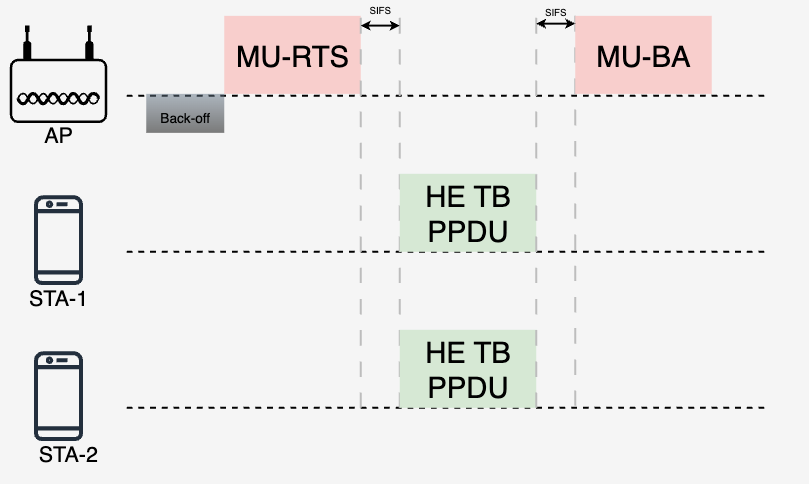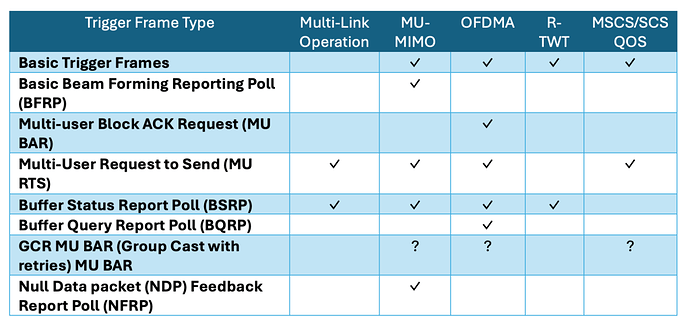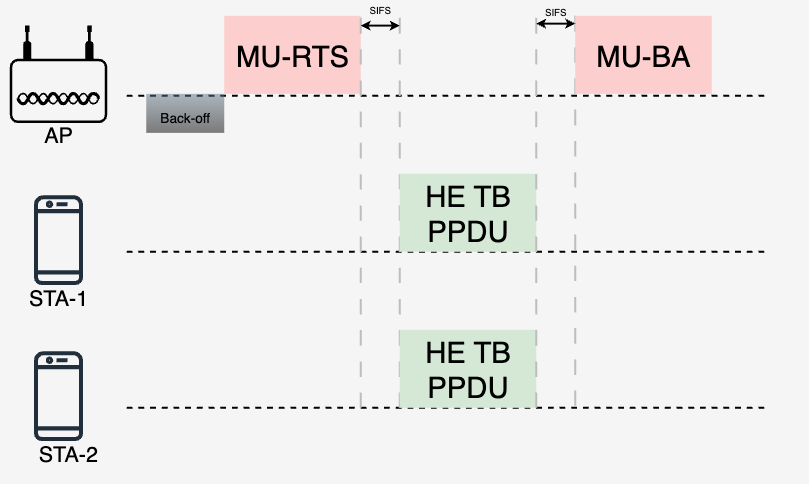Wi-Fi Trigger Frames

Wi-Fi technology is fundamentally based on listen before accessing the share medium (CSMA-CA). This was adopted for fair sharing of the unlicensed spectrum in the 2.4, 5 and 6GHz band. With the scaling in number of spatial streams and channel bandwidth, Wi-Fi technology has able to match ISP’s access network line rates
1 Gbps DOCSIS 3.0 line rate matched with Wi-Fi5 4×4, 80 MHz
2.5Gbps DOCSIS 3.1 line rate matched with Wi-Fi6, 160 MHz
10 Gbps XGSON & DOCSIS 4.0 matched with Wi-Fi7, 320 MHz
But what about latency? It has been found out that poor network latency significantly impacts a user’s quality of experience.
IEEE and Wi-Fi alliance have recognised this fact and have focused on bringing technologies to Wi-Fi which reduce latency and make Wi-Fi more reliable or deterministic. No surprise that Wi-Fi6 frames are called High Efficiency and Wi-Fi7, Extremely High Throughput (EHT).
Trigger frames is a type of control frame which are a crucial component of Wi-Fi6 and Wi-Fi7 technology. It improves co-ordination between AP and multiple associated STAs and managing AP/STA resources for efficient communication. These are several types of trigger frames which are used in setting up and maintaining flagship Wi-Fi technologies listed below.
How does triggering work?
The Wi-Fi AP sends out a unicast trigger frame (e.g. MU-RTS in example below). Trigger frames contain a Common Info and User Info List to set the transmit parameters of the participating STAs and information about AP to calculate the link budget.
STA’s Address Identifiers (AIDs), Resource Unit (RU), Forward Error Correction (FEC), Modulation and Coding Scheme (MCS), Guard internal (GI), Physical Protocol Data Unit (PPDU) length and bandwidth
Enable /Disable Network Allocation Network(NAV) and Clear Channel Assessment (CCA)
AP’s transmit power and target Received Signal Strength Indicator(RSSI)
The performance of Wi-Fi’s trigger frames based features are dependant on the Wi-Fi silicon Transmit power accuracy and RSSI calibration as they are used as the basis for calculating the STA’s transmit power and MCS index. Also the clock accuracy is critical for timely coordination of the transmission of the HE TB PPDU frames.
This image above shows a Wi-Fi 6 (802.11ax) communication sequence. The Access Point (AP) sends a Multi-User Request to Send (MU-RTS) frame to initiate communication. Stations (STA-1 and STA-2) respond with High Efficiency Trigger-Based Physical Protocol Data Units (HE TB PPDU) after a Short Inter frame Space (SIFS). The AP then sends a Multi-User Block Acknowledgement (MU-BA) to confirm receipt of the data. This sequence optimises multi-user transmissions, enhancing network efficiency and reducing latency.
Optimal use of Trigger frames will improve Quality of Experience of users. Have you optimised the use of these frames in your network solutions?
LinkedIn (and source): ![]()



